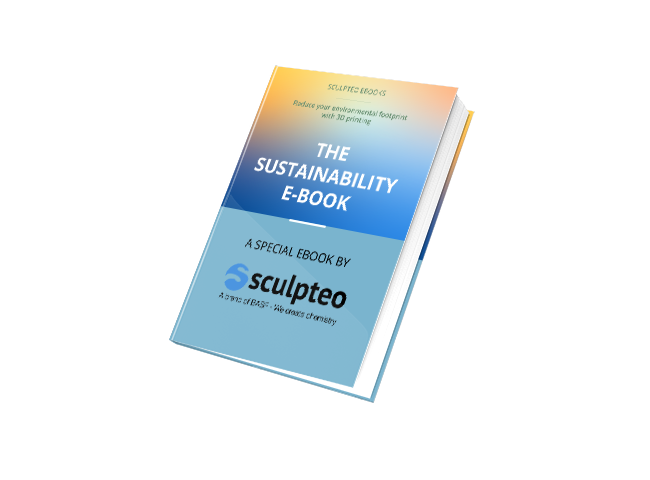Additive manufacturing offers many sustainable aspects that make it stand out compared to other technologies. A few of them overlap with one another, but there are about five core aspects. Let’s take a look at those five!
1. Freedom of Design
Freedom of Design is a term that is heavily linked to additive manufacturing. As 3D printing is a computer-to-part method, computer-based models are indispensable, and this is where freedom of design comes in. While creating those models, the prospect of 3D printing gives the designer the freedom to design a piece that traditionally could not be manufactured. The focus shifts from developing a part that is producible to a part that is printable as well as sustainable within that. Lattice structures can be added during the design process, or unnecessary material can even be reduced from the model. In this context, the word “Topology Optimization” is often mentioned. It is a software feature that improves the geometry of a part to figure out where an object needs material and where the material has no use for the efficiency and performance of the later product and is simply there for aesthetic reasons. Creating the best optimization of a part is often interrelated with less material and thus less use of raw material in the process.
Freedom of Design can also allow for designing integrated parts. Frequently while manufacturing traditionally, parts have to be split, produced separately, and then assembled again to create the finished product. Additive manufacturing skips most of these steps by directly printing the needed part in one go, saving material, time, and money in the process.
However, the sustainable aspect of freedom of design does not end there. Parts that, for example, are used within the transportation sector also help to relieve the environment. Because the more a plane or a car weighs, the more carbon dioxide is emitted. But if lighter parts are installed, it can help reduce carbon emissions.
2. Lower material waste
As mentioned in the paragraph above, freedom of design can help reduce the needed material within production. However, additive manufacturing usually needs less raw material than traditional manufacturing, even without an optimized part. This is due to the fact that the 3D printing method only prints precisely as much as the model from the 3D file requires by adding layer by layer. Subtractive manufacturing processes operate the opposite way. A material block is required, and the product is created by removing part of that material rather than adding it. In some cases, the removed parts can be reused, but often they end up in the bin as waste.
Filaments are printed directly, while powder-printed parts are made within a powder bed. During that process, not all powder is used. However, it is possible to mix the unprinted powder with new powder and then use that combination for the next print run. This also minimizes the material waste within 3D printing.
3. Digital inventory and less overproduction
Using additive manufacturing can revolutionize any inventory. Usually, businesses are owning huge inventory buildings, where spare and overproduced parts are stored. This way has many disadvantages. The physical inventory costs a lot of money for energy, labor, etc., and depending on how long the parts are kept there, they may break or are no longer usable and need to be disposed of. Thus being a waste of material and energy.
Additive manufacturing offers the option to use a digital inventory. If a part is needed, it can simply be printed on demand and sent to the customer. This does not only help to fight overproduction nowadays but also is exceptionally cost-effective and more efficient. Overproduction is a big problem, especially in industries like fashion. Many pieces that were not sold after a season or two are quickly disposed of, which means that the raw materials used to produce the product were used for nothing or stored in a physical inventory.
A digital inventory also comes in handy when a customer needs spare parts for a product bought many years ago. For traditional manufacturing, those spare parts must be stored and kept for years. With additive manufacturing, the spare part can be printed out of the digital inventory and does take up space in a physical inventory.
4. Repair work
Printing spare parts through a digital inventory can also have another advantage – when additive manufacturing is used to repair older products like cars or machines. If the parts are no longer available, they can be remade with 3D printing and then used to repair the broken part. With this practice, fewer products have to be disposed of. And less raw material has to be used to produce brand new products.
Of course, this practice can not be applied every time and is a case-to-case situation.


 Connect with Google
Connect with Google Connect with Facebook
Connect with Facebook
